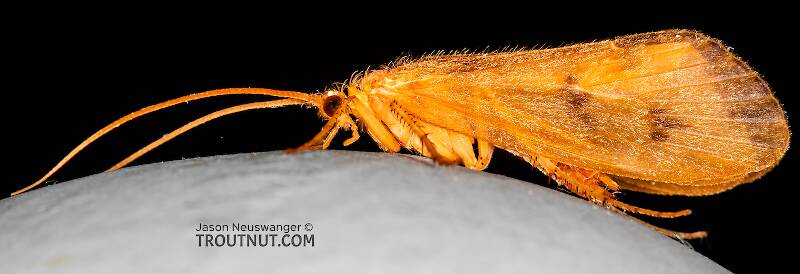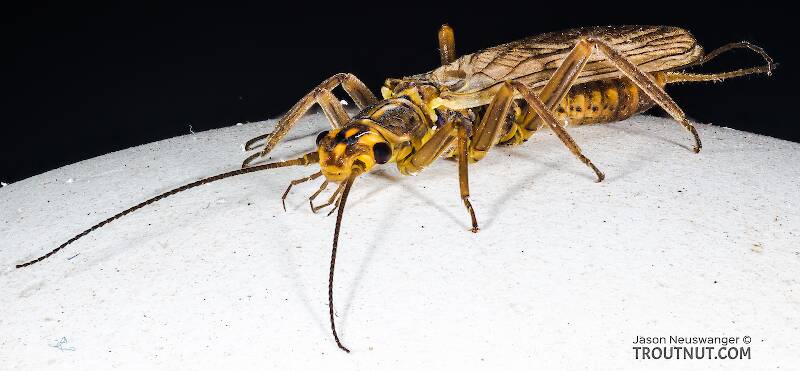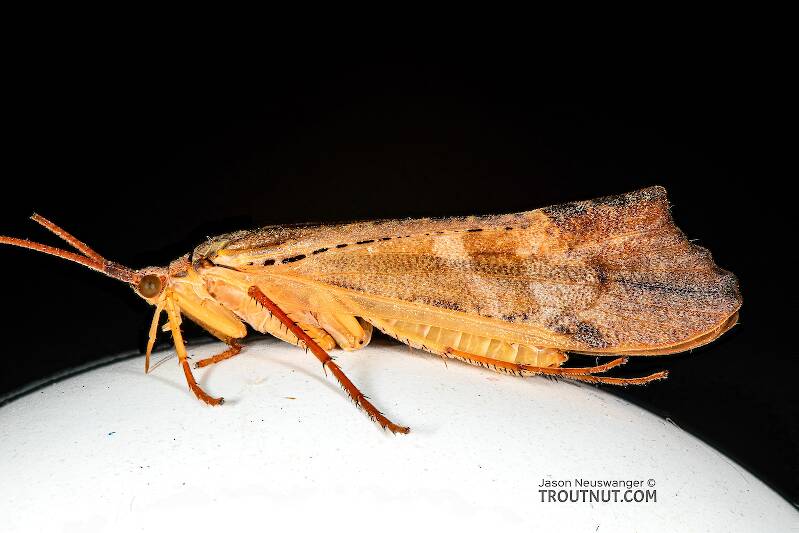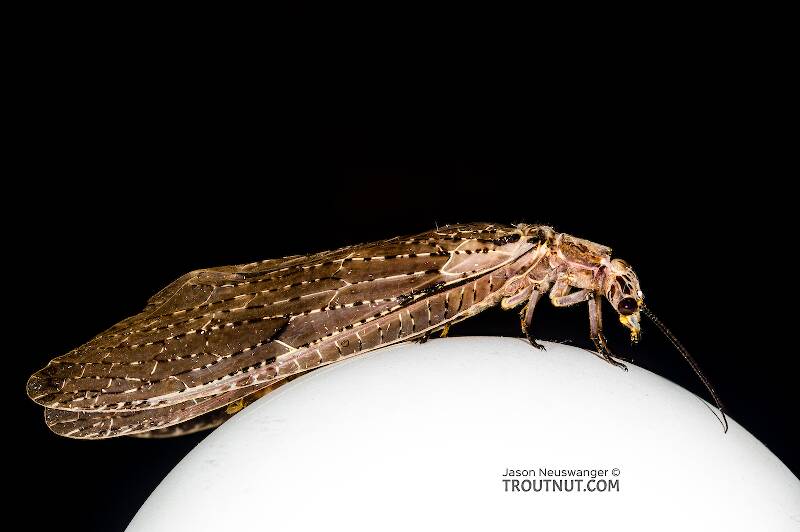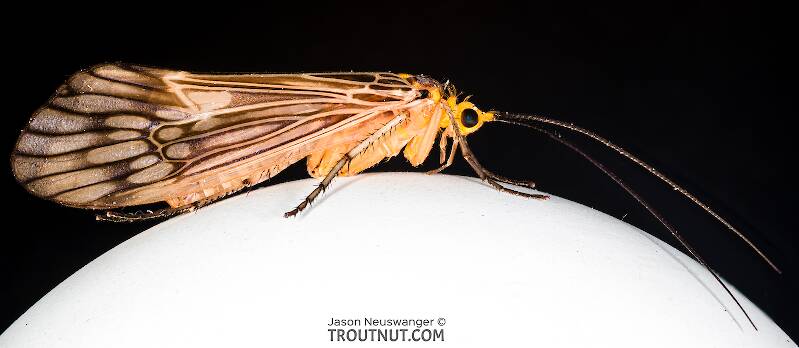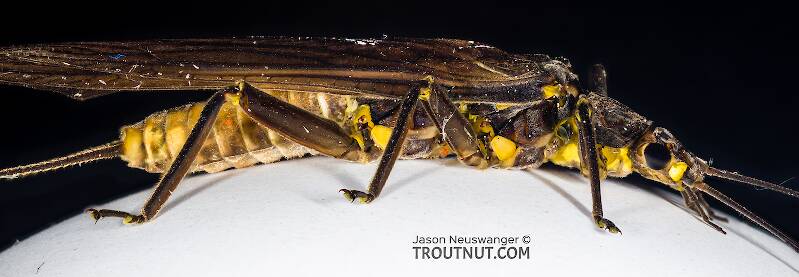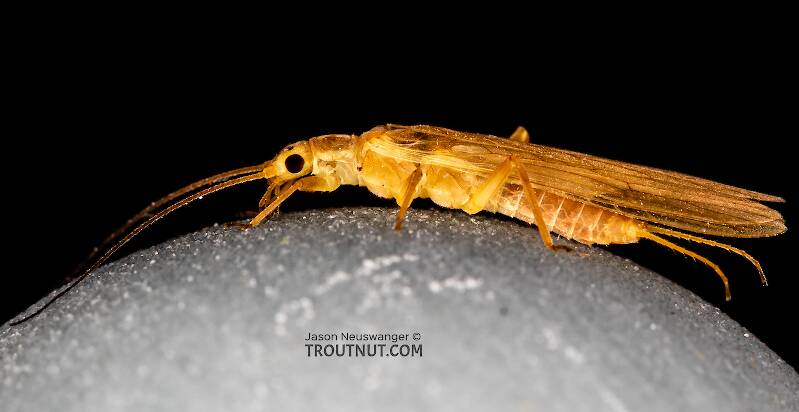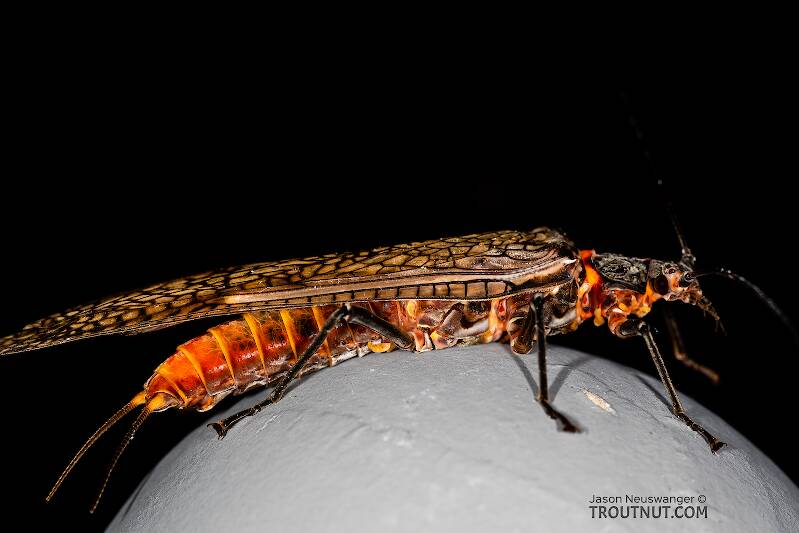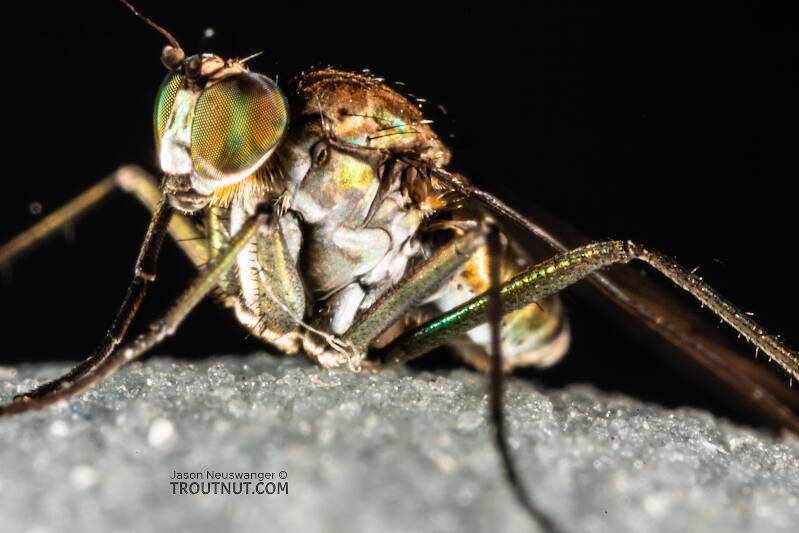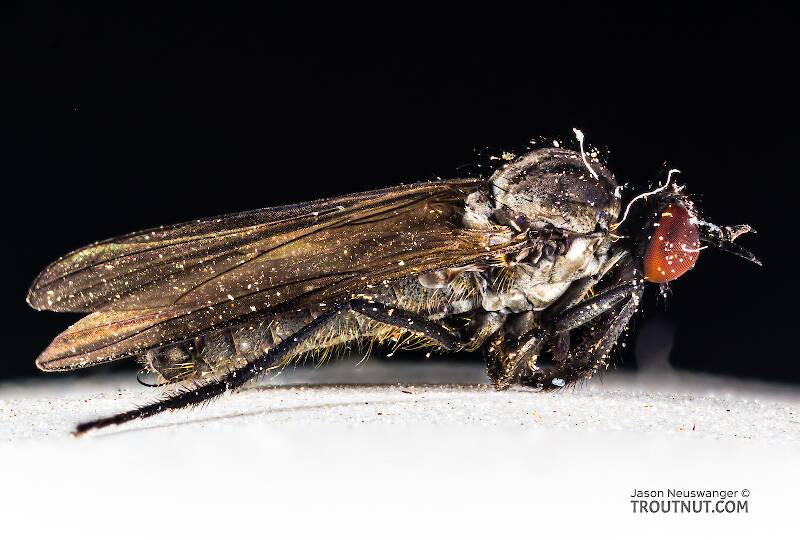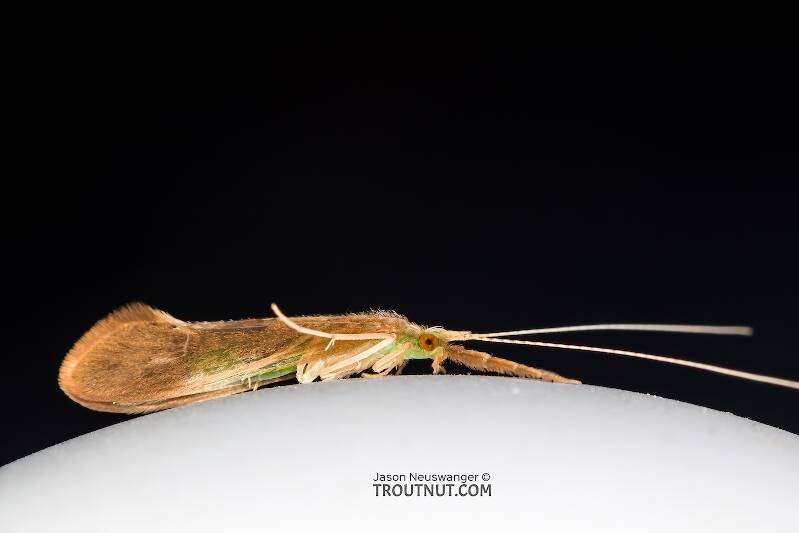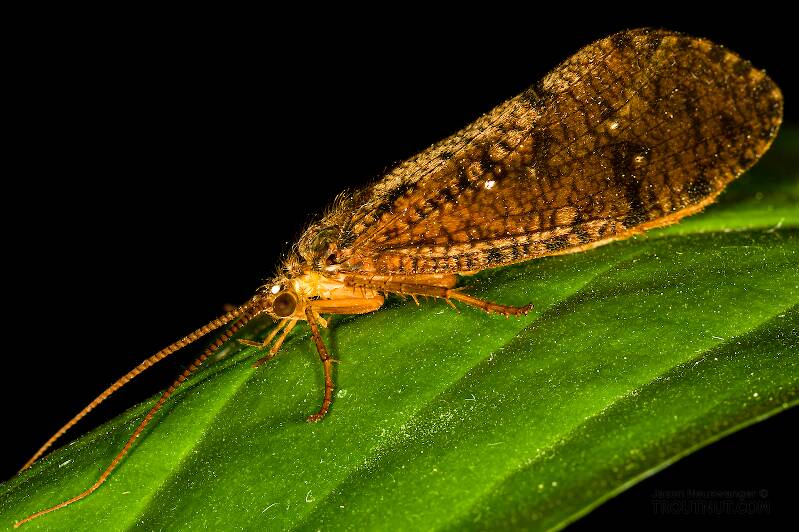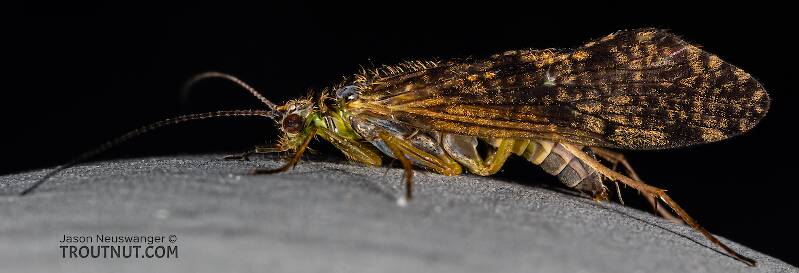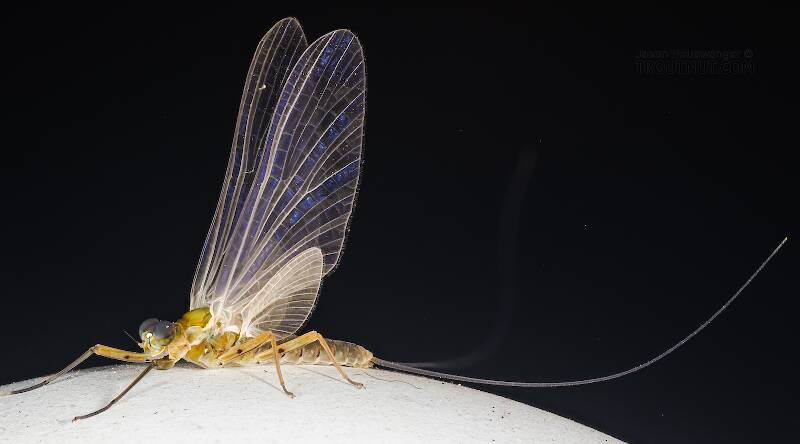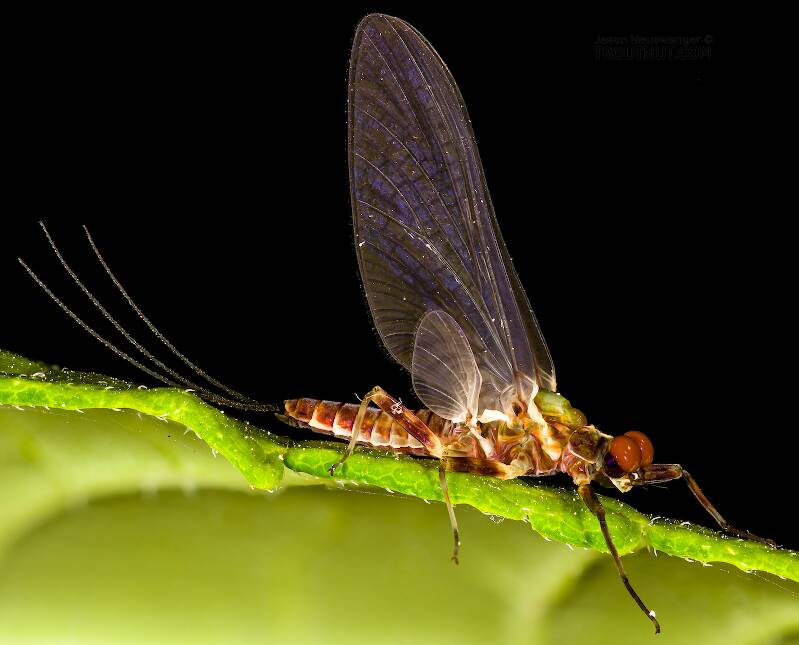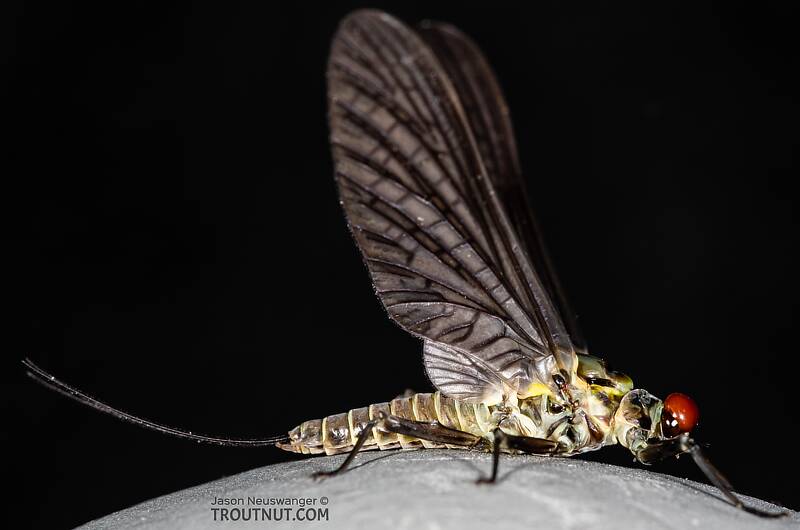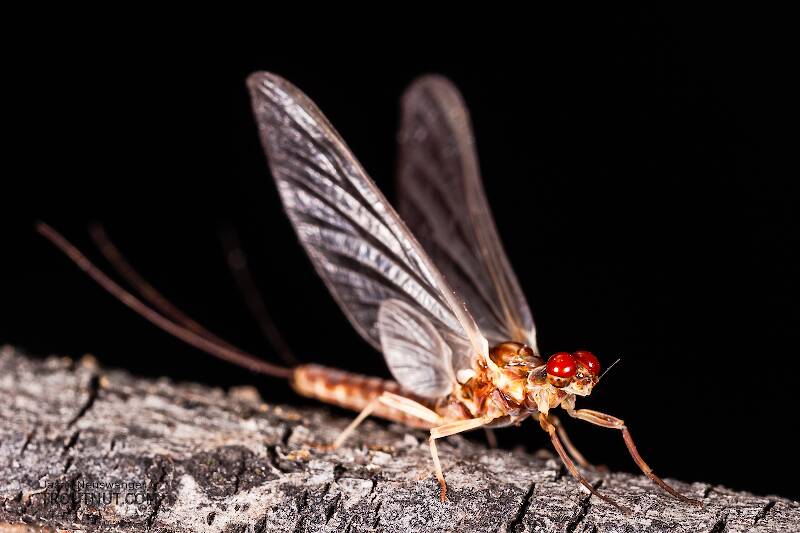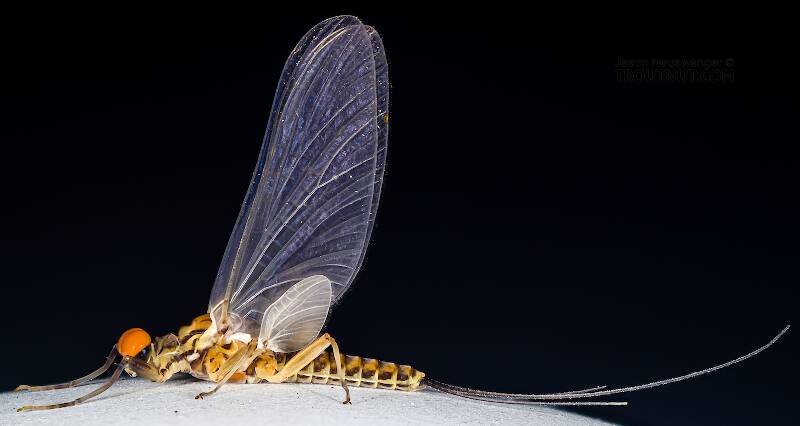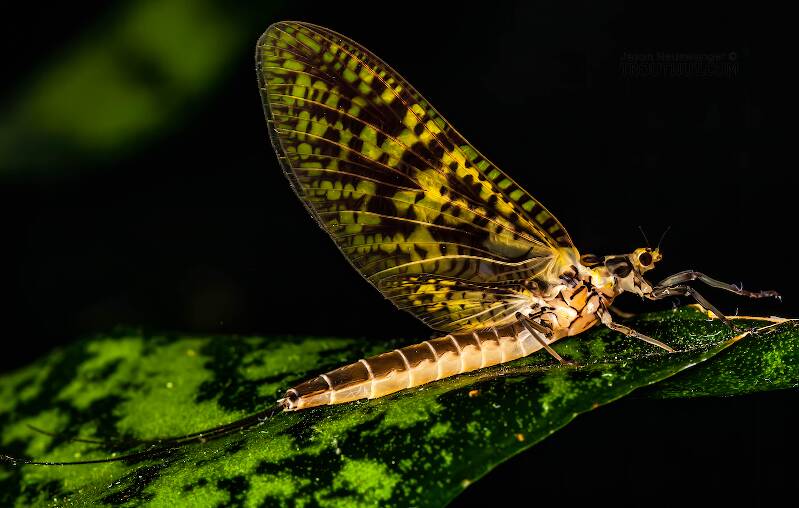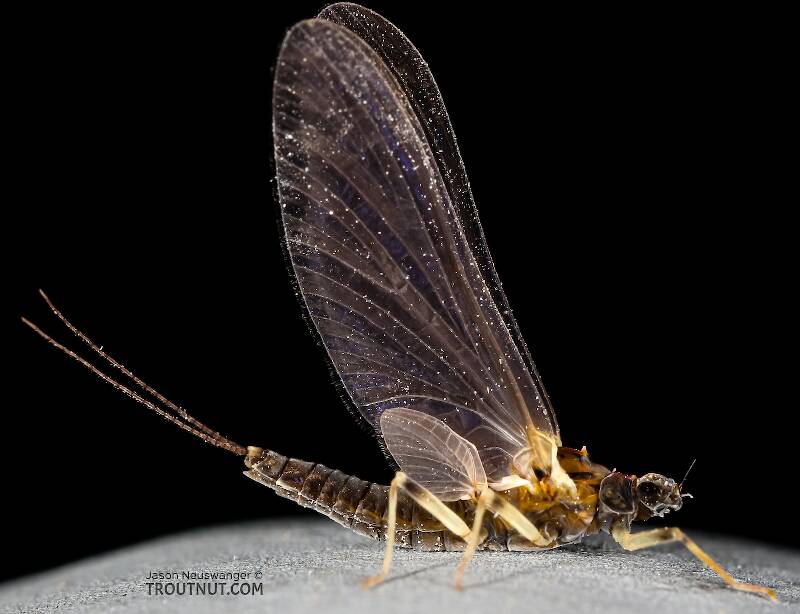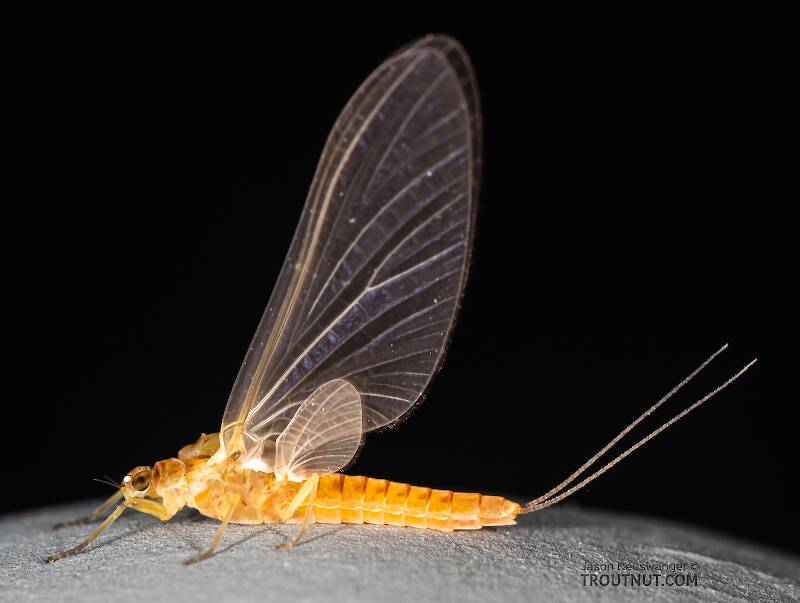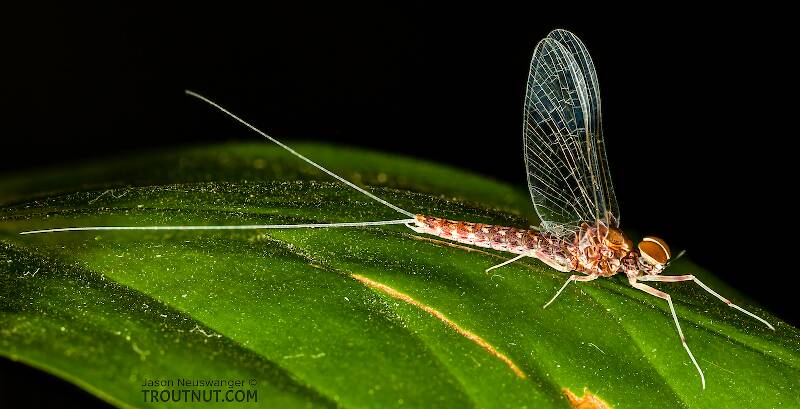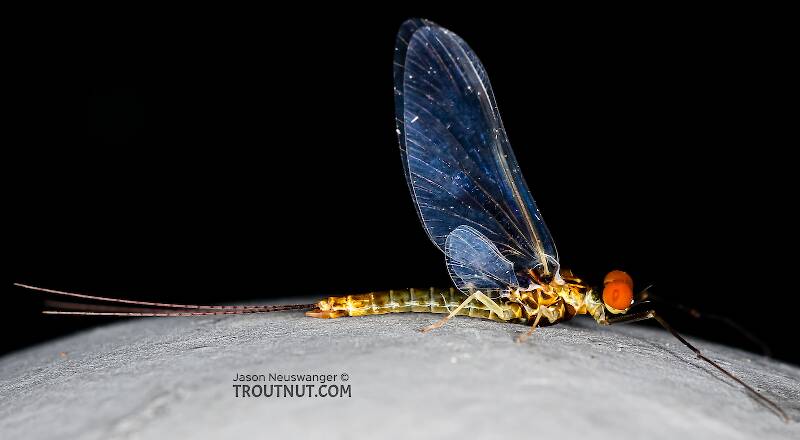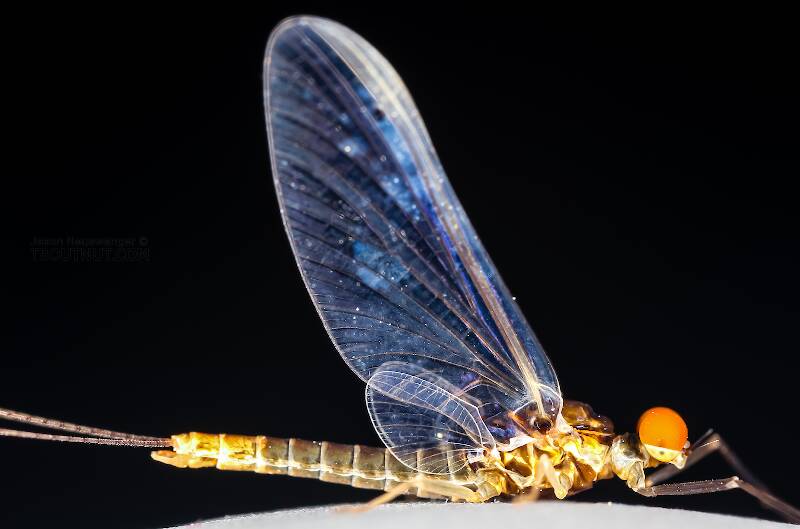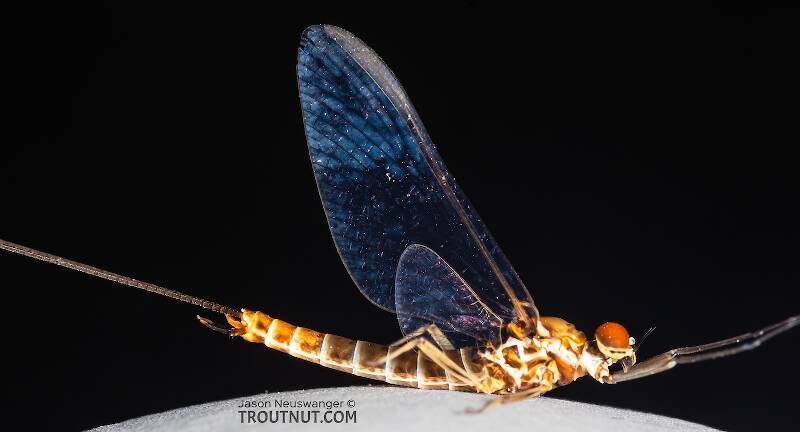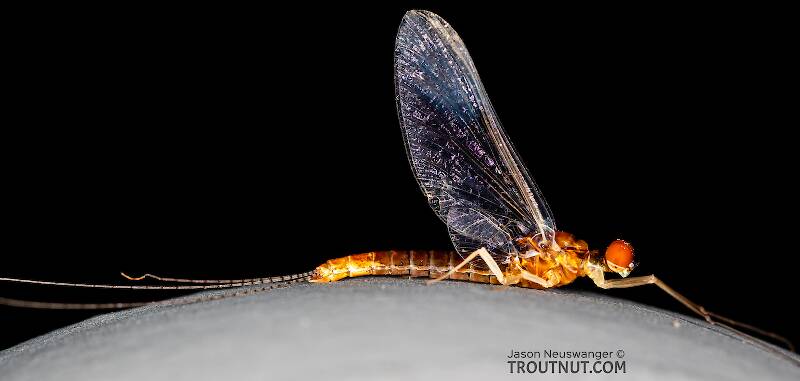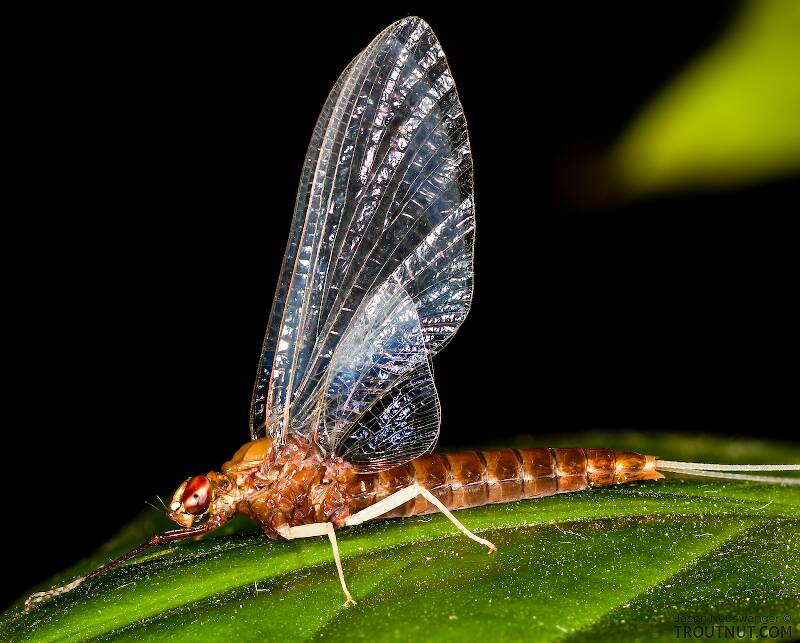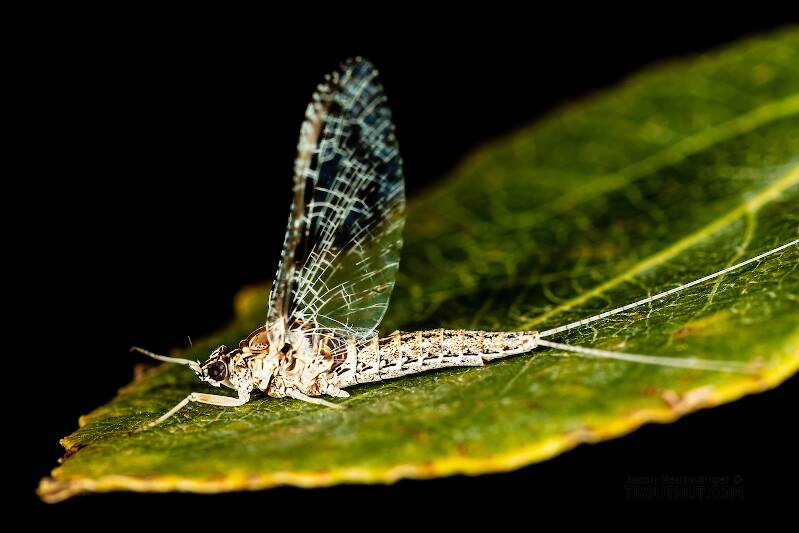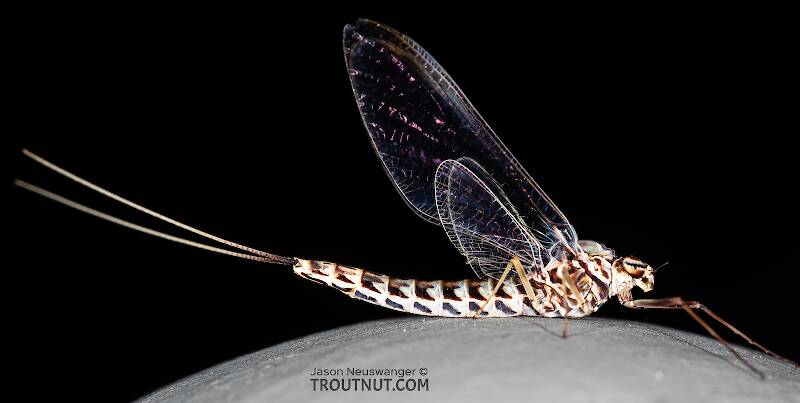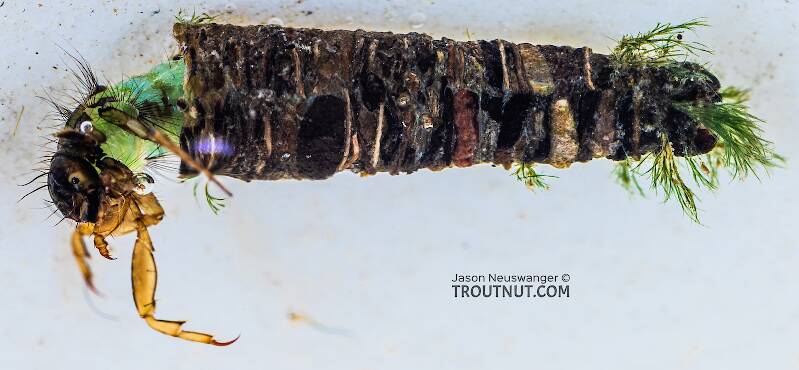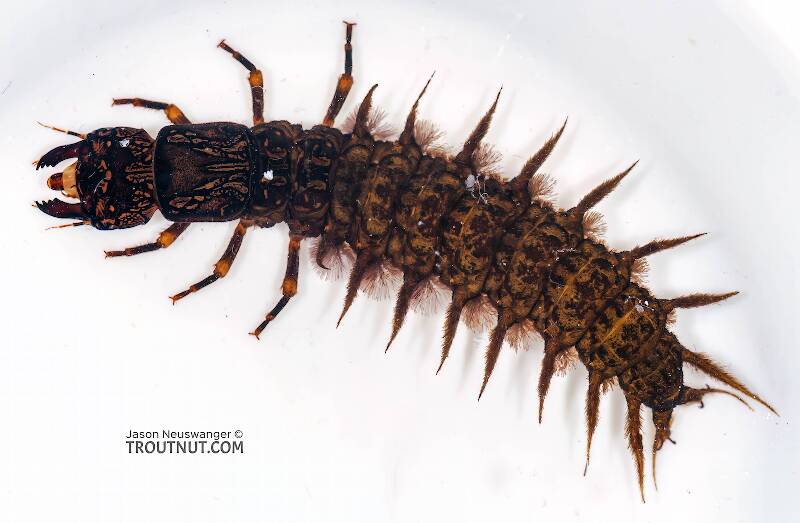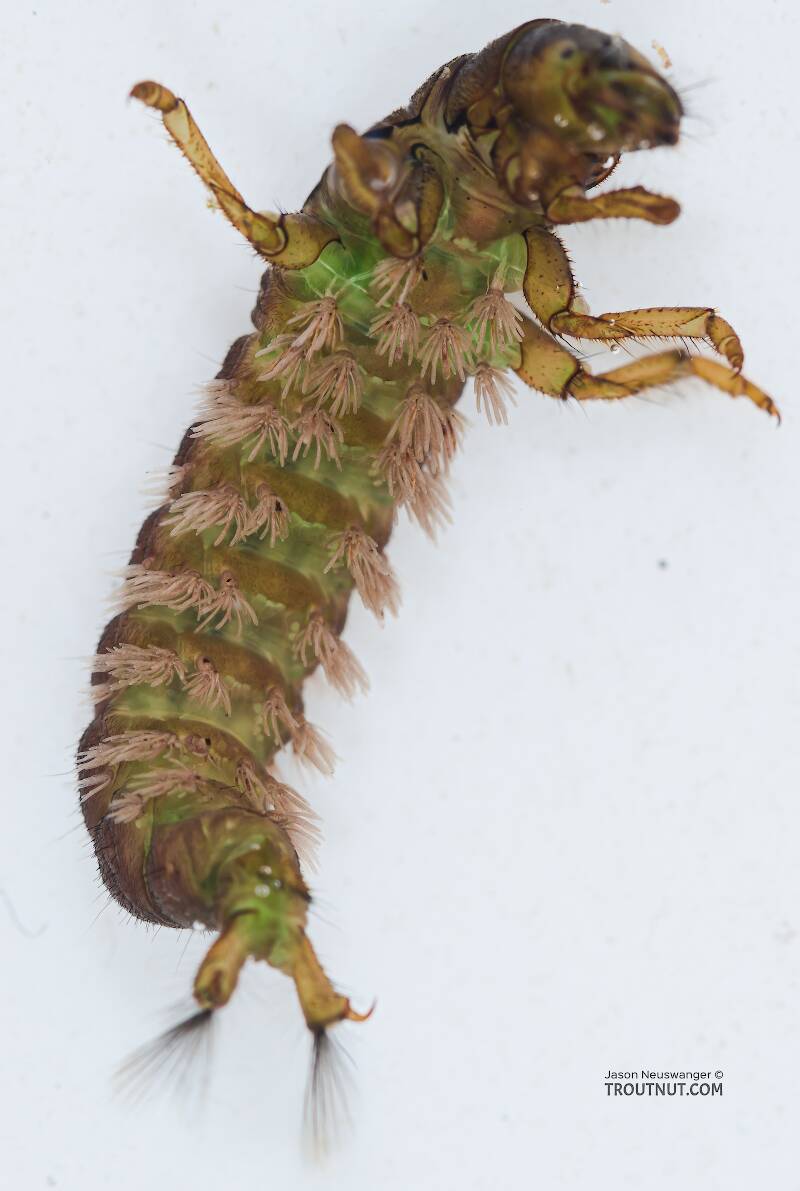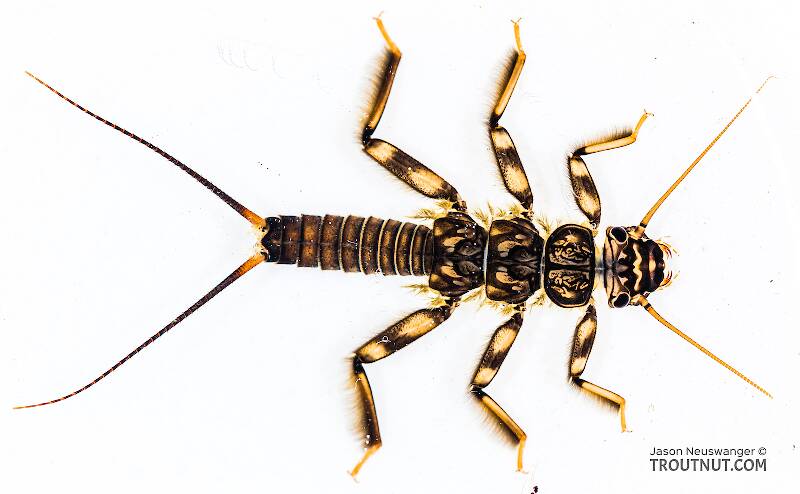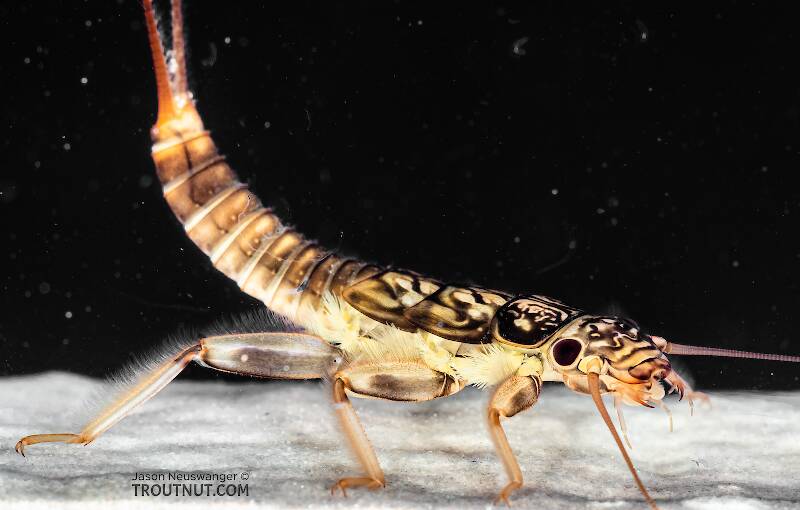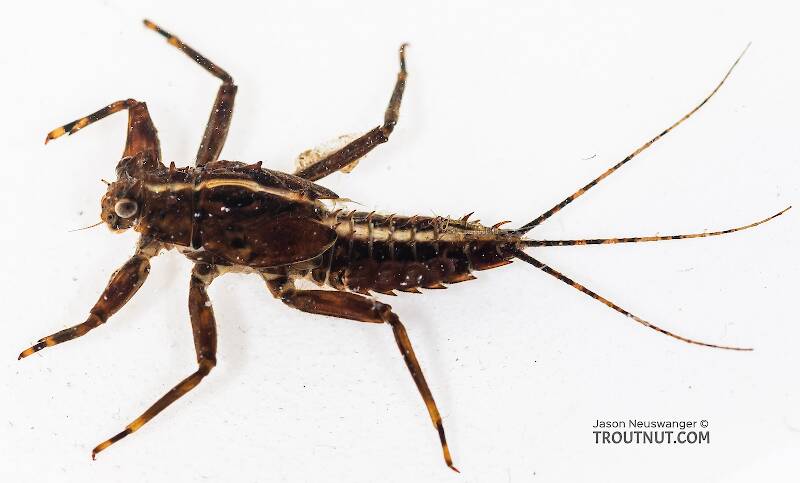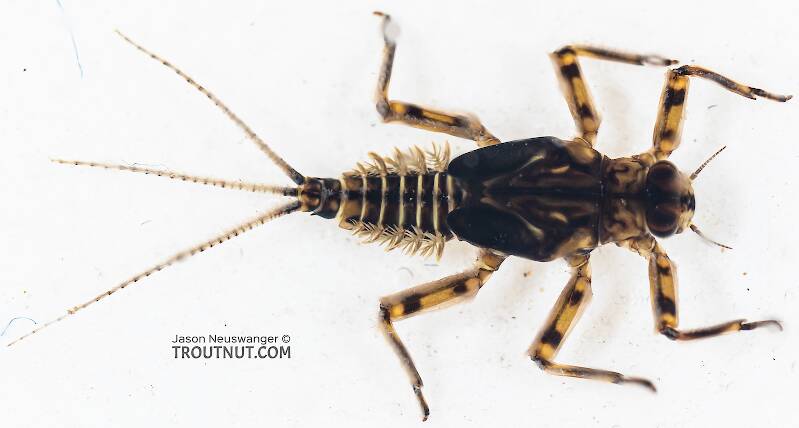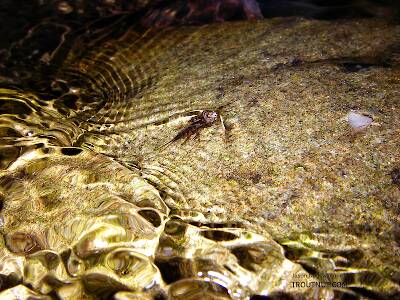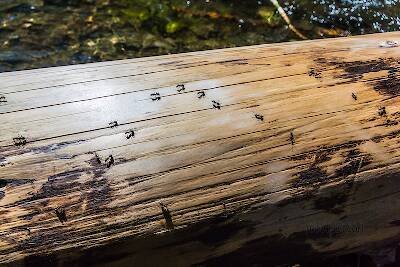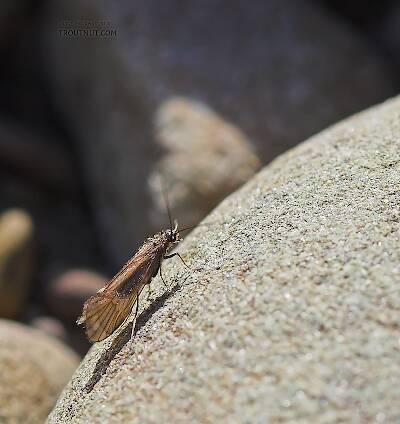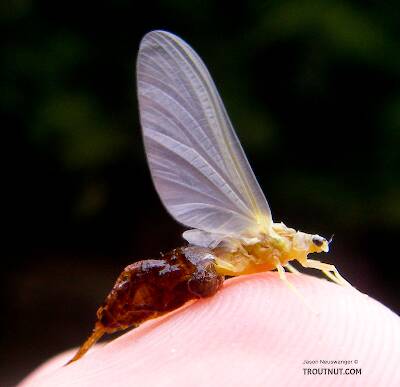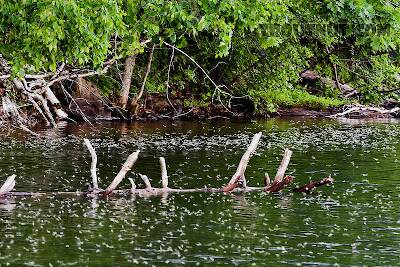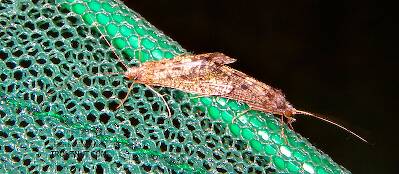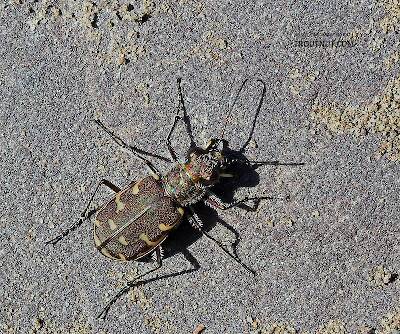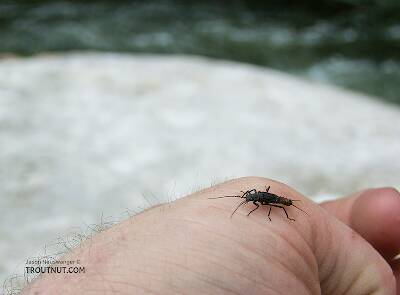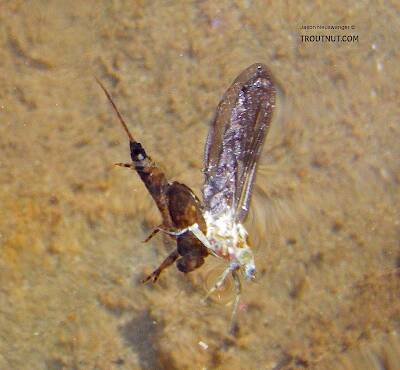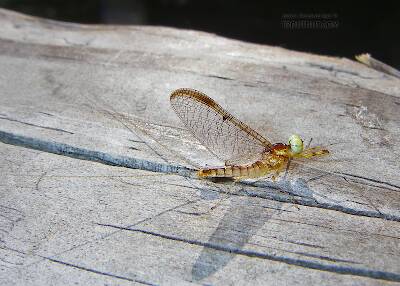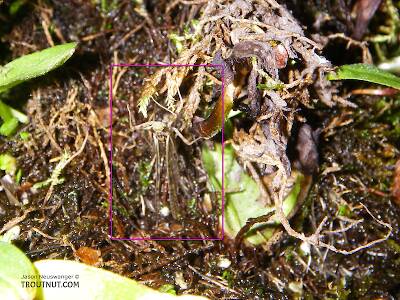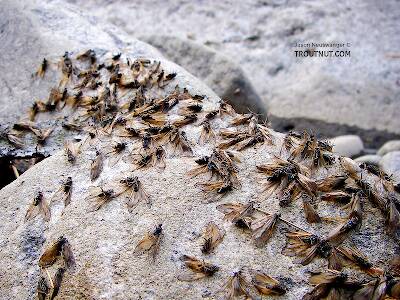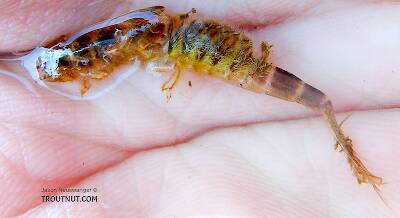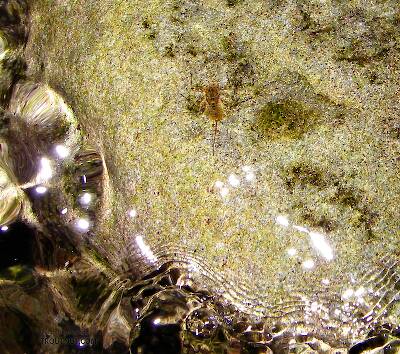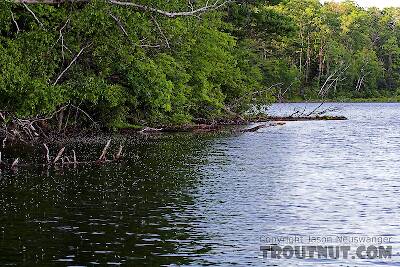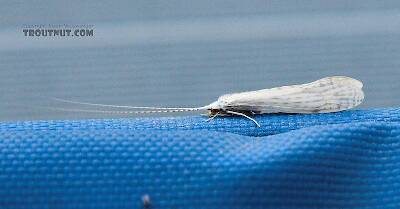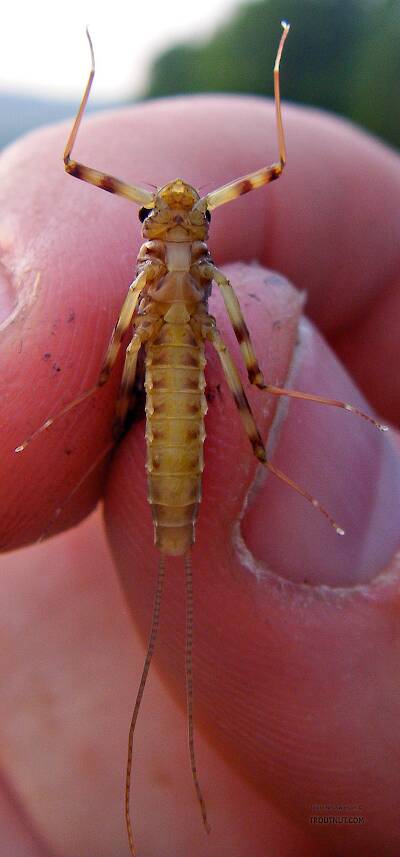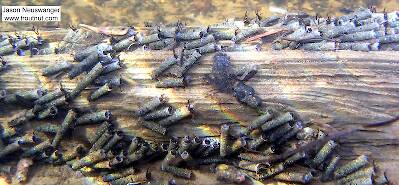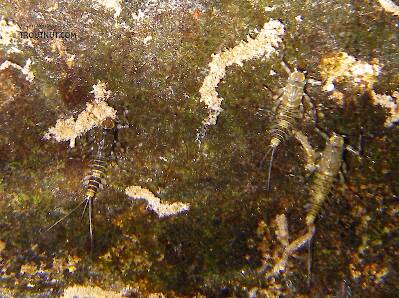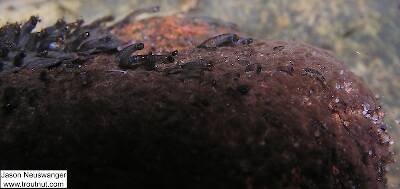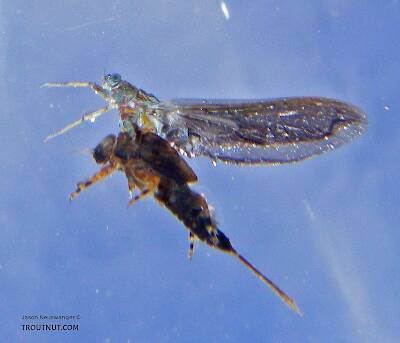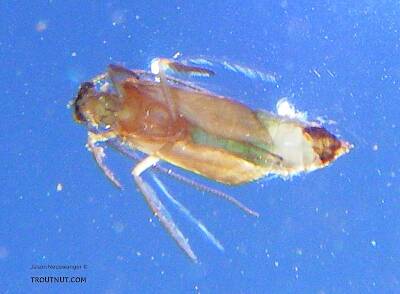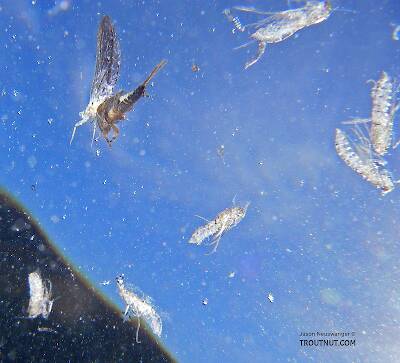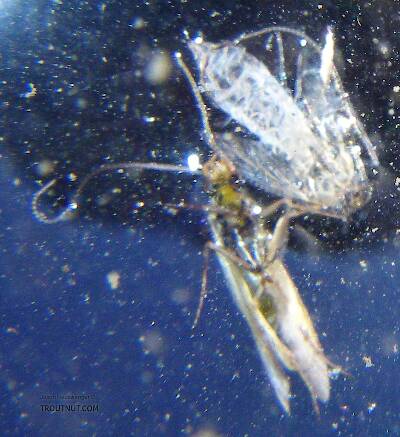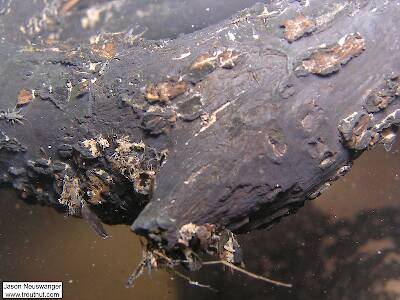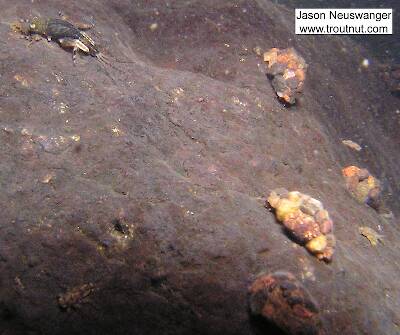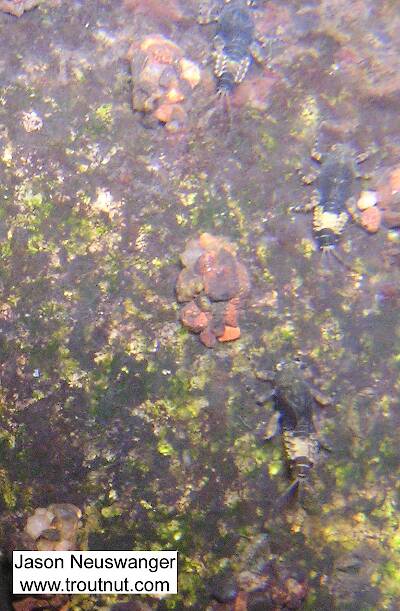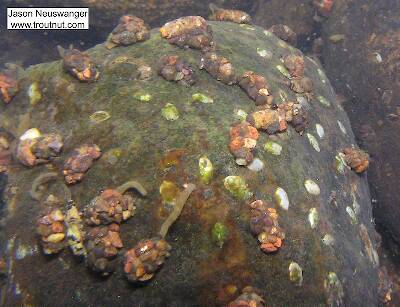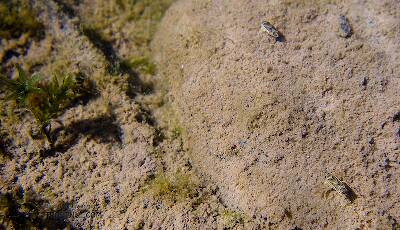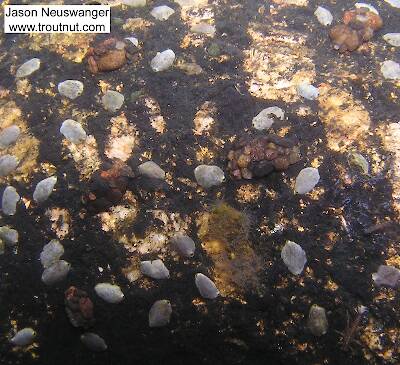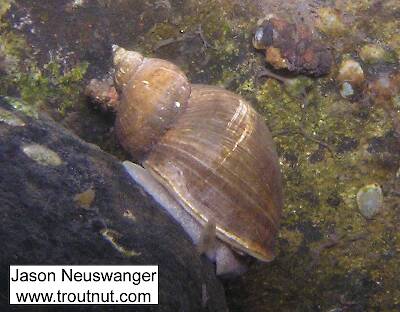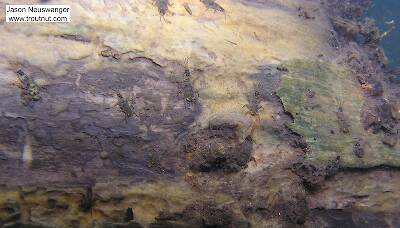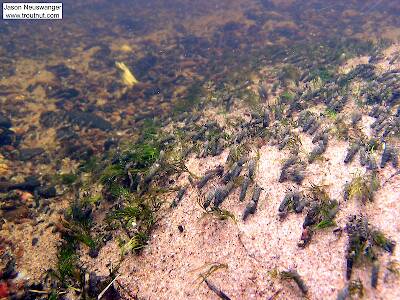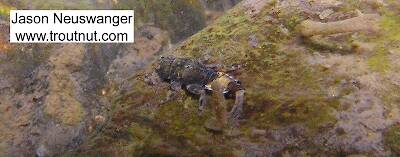
Salmonflies
Pteronarcys californica
The giant Salmonflies of the Western mountains are legendary for their proclivity to elicit consistent dry-fly action and ferocious strikes.
Featured on the forum

This one seems to tentatively key to Holocentropus, although I can't make out the anal spines in Couplet 7 of the Key to Genera of Polycentropodidae Larvae nor the dark bands in Couplet 4 of the Key to Genera of Polycentropodidae Larvae, making me wonder if I went wrong somewhere in keying it out. I don't see where that could have happened, though. It might also be that it's a very immature larva and doesn't possess all the identifying characteristics in the key yet. If Holocentropus is correct, then Holocentropus flavus and Holocentropus interruptus are the two likely possibilities based on range, but I was not able to find a description of their larvae.

Troutnut is a project started in 2003 by salmonid ecologist Jason "Troutnut" Neuswanger to help anglers and
fly tyers unabashedly embrace the entomological side of the sport. Learn more about Troutnut or
support the project for an enhanced experience here.
Arthropod Class Insecta (Insects)
Nearly a million species of insects have been described by entomologists. I have left several of them off of this site, just to save time, but I've tried to include all the main aquatic insects trout eat in North America.
This site focuses on aquatic insects, of which the most important are mayflies (Ephemeroptera) and caddisflies (Trichoptera). Stoneflies (Plecoptera) come in third, a position arguably challenged by the many two-winged true flies of the Diptera order, which includes midges and craneflies. I've also included some terrestrial insects which I've found on or near trout streams. Terrestrials like ants, beetles, and grasshoppers are an important food source for trout in many places, especially during the summer months.
Aquatic insects do not live their entire lives in the water. Instead, they grow for a year (give or take quite a bit) as nymphs or larvae underwater, and then they emerge into air-breathing winged insects for a short while to mate and die. There are many variations on this theme.
The most important aquatic insects for fly fishermen are mayflies, stoneflies, caddisflies, and midges. Mayflies and caddisflies are the most discussed by angler-entomologists, because it's so useful to closely identify them. The behavior of their species guides the behavior of feeding trout, and an angler who understands the lifecycle of a particular species has the upper hand when it's hatching. This is not so important for stoneflies and midges, because their hatching behavior is less variable.
This site focuses on aquatic insects, of which the most important are mayflies (Ephemeroptera) and caddisflies (Trichoptera). Stoneflies (Plecoptera) come in third, a position arguably challenged by the many two-winged true flies of the Diptera order, which includes midges and craneflies. I've also included some terrestrial insects which I've found on or near trout streams. Terrestrials like ants, beetles, and grasshoppers are an important food source for trout in many places, especially during the summer months.
Aquatic insects do not live their entire lives in the water. Instead, they grow for a year (give or take quite a bit) as nymphs or larvae underwater, and then they emerge into air-breathing winged insects for a short while to mate and die. There are many variations on this theme.
The most important aquatic insects for fly fishermen are mayflies, stoneflies, caddisflies, and midges. Mayflies and caddisflies are the most discussed by angler-entomologists, because it's so useful to closely identify them. The behavior of their species guides the behavior of feeding trout, and an angler who understands the lifecycle of a particular species has the upper hand when it's hatching. This is not so important for stoneflies and midges, because their hatching behavior is less variable.
Specimens of Insects:
4 Male Adults
5 Female Adults
5 Adults
1 Pupa
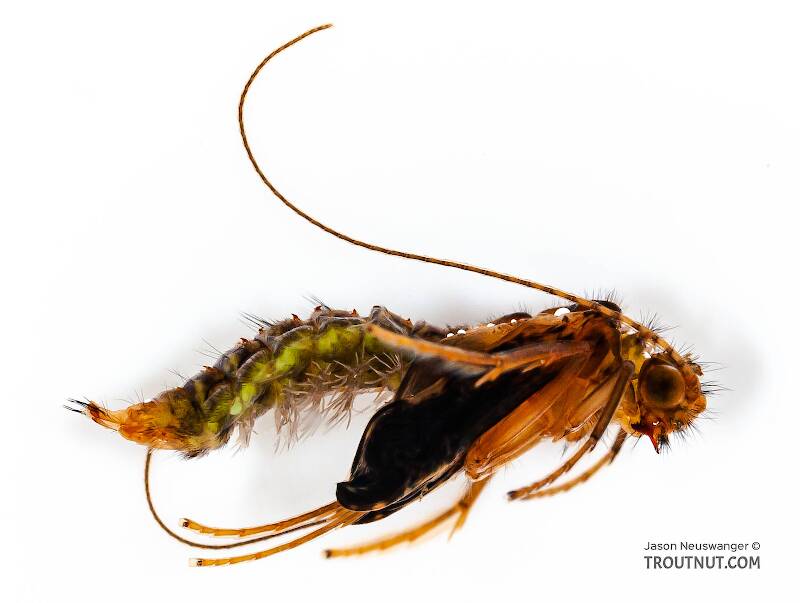
This is the first fully formed caddis pupa (technically, a pharate adult) that I've collected and photographed alive and healthy. I'll put a video of this specimen online soon, too.
5 Male Duns
4 Female Duns
5 Male Spinners
3 Female Spinners
5 Larvae
4 Nymphs
18 Streamside Pictures of Insects:
18 Underwater Pictures of Insects:
Discussions of Insecta
Possible ID
1 replies
Posted by Sreyadig on Apr 11, 2021 in the species Apobaetis futilis
Last reply on Apr 11, 2021 by Taxon
In searching for nymphs in my small stream in northern Maryland, 500 yards from the PA line, I came across a 2 tailed mayfly that was not a of the Epeorus genus.
It was in a fast riffle section along with Epeorus nymphs. This was about 3/8” in overall length including tails. Darker straw coloration with dark brownish black wing cases that were pronounced in color and shape. Biggest factor was the tails. Median caudal filament was truncated, very small compared to the outer pair. Not even sure if tail/ caudal filament should be used to describe. In my books the closest thing is the Pseudocloeon futile. Which is an old taxonomic name I’m finding out.
This find seems rare in my area and experience. Hopefully I can get a photo...
It was in a fast riffle section along with Epeorus nymphs. This was about 3/8” in overall length including tails. Darker straw coloration with dark brownish black wing cases that were pronounced in color and shape. Biggest factor was the tails. Median caudal filament was truncated, very small compared to the outer pair. Not even sure if tail/ caudal filament should be used to describe. In my books the closest thing is the Pseudocloeon futile. Which is an old taxonomic name I’m finding out.
This find seems rare in my area and experience. Hopefully I can get a photo...
Yea...
Posted by Imaxfli on Oct 23, 2020 in the species Ephoron leukon
Last reply on Oct 23, 2020 by Imaxfli
Me too looking for photos or better yet, video of matching. These things seem to pop outa the water like no other ......
Trico emergers
6 replies
Posted by Bwoklink on Jul 14, 2018 in the genus Tricorythodes
Last reply on Sep 11, 2020 by Martinlf
Anyone have experience fishing Trico emergers patterns? I've had experience fishing the winged and spinner stage, but haven't heard of anyone fishing emergers during the early morning female hatch. Anyone used emerger patterns and if so would you might sharing which ones you have found effective?
PMD Spinner - Egg sack color?
20 replies
Posted by Wbranch on Jan 26, 2010 in the species Ephemerella excrucians
Last reply on Aug 18, 2020 by Troutnut
Do any of you entomologist types know the true color of the PMD spinner? Dorothea or excrucians. Where I fish in MT there are huge spinner falls, many spents are on the water in the morning and others fall again at various periods during the day. I'd like to tie some with egg sacks as I saw many in July but forgot what color they were. Thanks.
Trico Tips
50 replies
Posted by Martinlf on Jul 21, 2007 in the genus Tricorythodes
Last reply on Jul 31, 2020 by Martinlf
I'll start with a fly patterns, follow with a bit of what I think I know about Tricos (Entomologists, please offer corrections if needed), and close with a few questions.
I love designing different patterns for Tricos, partly to keep myself entertained, and partly to show the fish something new from time to time. Jason's photos and the opinions of some fussy fish have led me to tie an extra large thorax recently on all my Tricos. My old standby is a parachute tied reverse, with a high vis post over the bend of the hook, and grizzly hackle, with no tails. It's modeled on Al's Trico, which could be found on the Little Lehigh Flyshop website until Rod closed the shop. An internet search may provide images now. It's very visible and fish generally approve. My newest fly is a take off from one of Gonzo's (Lloyd Gonzales) patterns in his book Fly-fishing Pressured Water, and it also shows the influence of Al's Trico. Gonzo ties an upside down Trico on a wide gap hook using synthetic material for the wing. I tie this fly also, and it certainly does catch fish, but I recently tied a version with grizzly hackle, making an oversize thorax and palmering hackle over the thorax to create a full wing. I then clipped hackle from the top of the fly (which becomes the bottom, as this is an upside down fly) so that the fly would sit flat, upside down, on my tying table. A drop of Locktite brush-on super glue on the bare recently clipped thorax after darkening the hackle stem with black marker and the fly was done. (By the way, I put tails on this one to balance it [P.S. Later correction: this pattern doesn't need the tails. I've caught plenty fish now on a tailless version] .) It caught several fish the first time I tried it on a heavily fished stream.
I believe for some, if not most species of Tricos, males hatch at night, females in the morning, and that the spinners fall when the air temperature hits the upper 60's. This generally means that as the season goes on, spinners hit the water later and later. Sometimes by 7:00 am (or earlier) in the early summer, by 10:00 (or later) in the fall.
It's been unseasonably cool in the Northeast the past couple of days, and I would have gone out this morning but for taking my daughter to a midnight showing of The Order of the Phoenix (I just couldn't get up) but I'm wondering if the spinner fall happens later than normal on cool mid-summer mornings like today's. I hope to find out Monday, but am curious if anyone has experiences to share. Also, does anyone have an effective Trico pattern to share? I'm always looking for ideas.
I love designing different patterns for Tricos, partly to keep myself entertained, and partly to show the fish something new from time to time. Jason's photos and the opinions of some fussy fish have led me to tie an extra large thorax recently on all my Tricos. My old standby is a parachute tied reverse, with a high vis post over the bend of the hook, and grizzly hackle, with no tails. It's modeled on Al's Trico, which could be found on the Little Lehigh Flyshop website until Rod closed the shop. An internet search may provide images now. It's very visible and fish generally approve. My newest fly is a take off from one of Gonzo's (Lloyd Gonzales) patterns in his book Fly-fishing Pressured Water, and it also shows the influence of Al's Trico. Gonzo ties an upside down Trico on a wide gap hook using synthetic material for the wing. I tie this fly also, and it certainly does catch fish, but I recently tied a version with grizzly hackle, making an oversize thorax and palmering hackle over the thorax to create a full wing. I then clipped hackle from the top of the fly (which becomes the bottom, as this is an upside down fly) so that the fly would sit flat, upside down, on my tying table. A drop of Locktite brush-on super glue on the bare recently clipped thorax after darkening the hackle stem with black marker and the fly was done. (By the way, I put tails on this one to balance it [P.S. Later correction: this pattern doesn't need the tails. I've caught plenty fish now on a tailless version] .) It caught several fish the first time I tried it on a heavily fished stream.
I believe for some, if not most species of Tricos, males hatch at night, females in the morning, and that the spinners fall when the air temperature hits the upper 60's. This generally means that as the season goes on, spinners hit the water later and later. Sometimes by 7:00 am (or earlier) in the early summer, by 10:00 (or later) in the fall.
It's been unseasonably cool in the Northeast the past couple of days, and I would have gone out this morning but for taking my daughter to a midnight showing of The Order of the Phoenix (I just couldn't get up) but I'm wondering if the spinner fall happens later than normal on cool mid-summer mornings like today's. I hope to find out Monday, but am curious if anyone has experiences to share. Also, does anyone have an effective Trico pattern to share? I'm always looking for ideas.
Start a Discussion of Insecta
References
- Merritt R.W., Cummins, K.W., and Berg, M.B. 2019. An Introduction to the Aquatic Insects of North America (Fifth Edition). Kendall/Hunt Publishing Company.
Arthropod Class Insecta (Insects)
Taxonomy
Order in Insecta
ColeopteraBeetles
10
50
DipteraTrue Flies
62
336
EphemeropteraMayflies
892
4769
HemipteraTrue Bugs
9
50
HymenopteraAnts, Bees, and Wasps
9
45
LepidopteraMoths
4
22
MegalopteraHellgrammites, Dobsonflies, and Alderflies
14
100
Odonata-AnisopteraDragonflies
12
32
Odonata-ZygopteraDamselflies
8
31
OrthopteraGrasshoppers and Crickets
1
7
PlecopteraStoneflies
175
1120
Psocodea
1
4
TrichopteraCaddisflies
153
1147
Order in Insecta: Coleoptera, Diptera, Ephemeroptera, Hemiptera, Hymenoptera, Lepidoptera, Megaloptera, Odonata-Anisoptera, Odonata-Zygoptera, Orthoptera, Plecoptera, Psocodea, Trichoptera
1 order (Neuroptera) isn't included.


